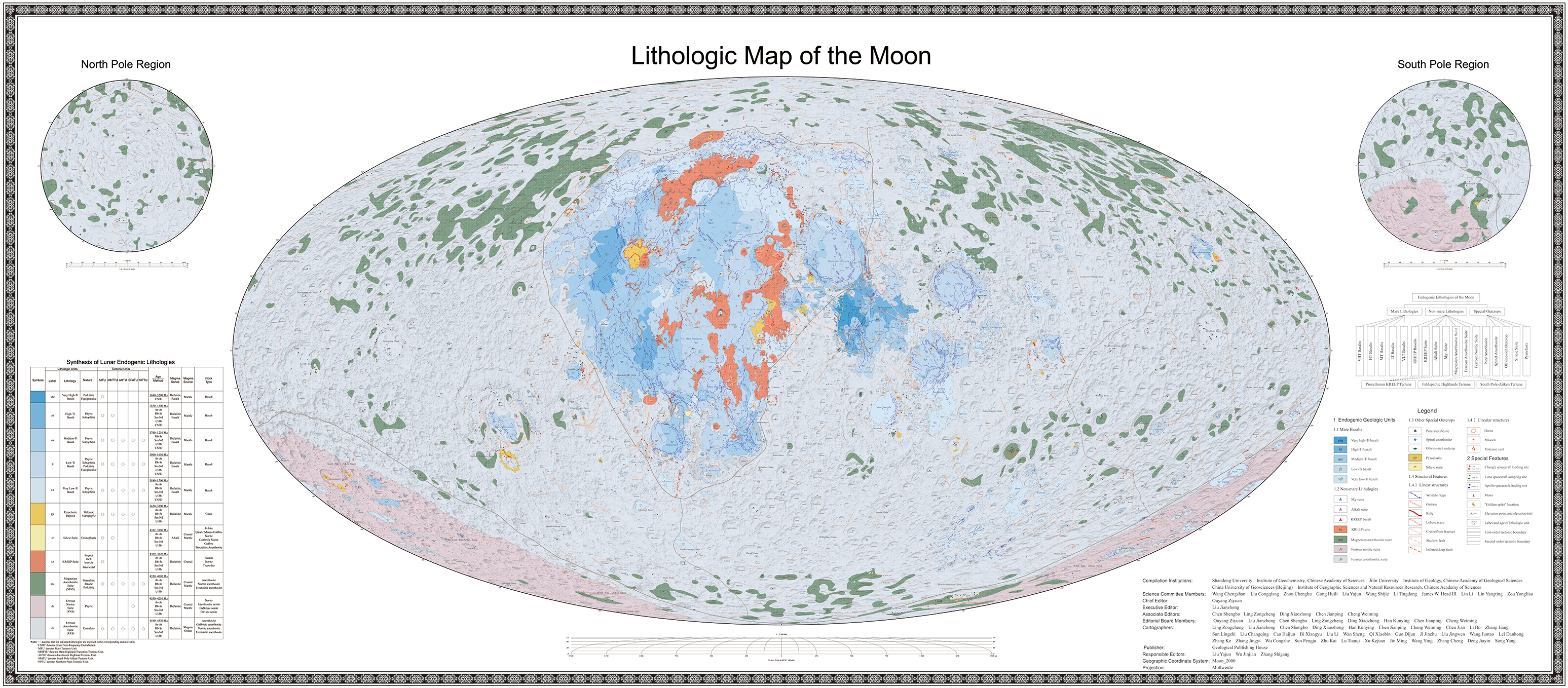Chinese astronomers have released the most detailed atlas of the Moon to date, which they describe as “the first high-resolution geological atlas of the entire Moon.” The atlas provides not only images of craters as seen from telescopes or orbiters, but geological, lithological and tectonic maps of the entire lunar surface.
Before the Apollo missions, NASA compiled detailed maps of the near side of the Moon and released them to the public to adorn many classroom walls, with higher-resolution versions available to keen amateur astronomers. However, just as exploration of the Moon has stalled for decades, so have available maps. Now, however, both are changing as nations overtake each other.
Years of operation by lunar orbiters equipped with sensors far more advanced than those available in pre-Apollo times yielded a wealth of new information about the Moon.
“With the accumulation of data and research results, these lunar geological maps may no longer meet the future needs of lunar scientific research and exploration,” said atlas editor-in-chief Liu Jianzhong of the Institute of Geochemistry of the Chinese Academy of Sciences. declaration.
Liu oversaw the production of geological lunar maps at a scale of 1:2.5 million, so that each centimeter on the map corresponds to 25 kilometers (15.5 miles). In addition to detailed maps of the 30 lunar quadrangles, maps of the entire lunar surface are available for visualization at once, albeit somewhat distorted near the poles.
Although the Moon does not have active plate tectonics moving against itself like Earth, it retains what Liu and his colleagues call “tectonic units” from the beginning of its formation. A tectonic map reveals their location along with an explanation of the classification system for lunar structures.
It may look less interesting than others, but the fact that the Moon still has tectonic units is significant, even if we can’t see their boundaries.
Image credit: Institute of Geochemistry, Chinese Academy of Sciences
A lithographic map identifies different rock types by color, while a geological map is the most familiar, identifying craters, their composition, and the timing of their formation.

The lithographic map shows the Moon in a new way with different rock types represented by their color.
Image credit: Institute of Geochemistry, Chinese Academy of Sciences
In the process of creating these maps, the team came up with their new timeline for the Moon, which divides the moon’s geologic history into three eons and six periods, which they say is more objective than previous timelines.
The new timeline highlights the shift from the young Moon, when change was driven from within (endogenous), to a much longer period dominated by external influences such as asteroid impacts (exogenous). The creators of the atlas say this difference also helped them classify the moon’s structures and rock types to create different kinds of maps.
In addition to labeling 12,341 impact craters, 81 impact basins, 17 rock types, and 14 structure types, the atlas creators classified the basins based on the processes of their formation. They also included important markers of a new era that some people are calling the Moon’s own Anthropocene, with both human and machine landing sites on the Moon.

The entire atlas comes as a set, but the price suggests it is for institutions rather than individuals.
Image credit: Institute of Geochemistry, Chinese Academy of Sciences
Available in both Chinese and English, the educational potential of the atlas is obvious, especially if the upcoming human landings generate worldwide interest. However, the creators also see it as a tool for “scientific exploration of the Moon … landing site selection, lunar resource exploration, and trajectory planning for China’s future lunar exploration projects.”
The atlas is available from Geological Publishing, but it’s probably not a birthday present for the moon lover in your life unless you’re very wealthy.